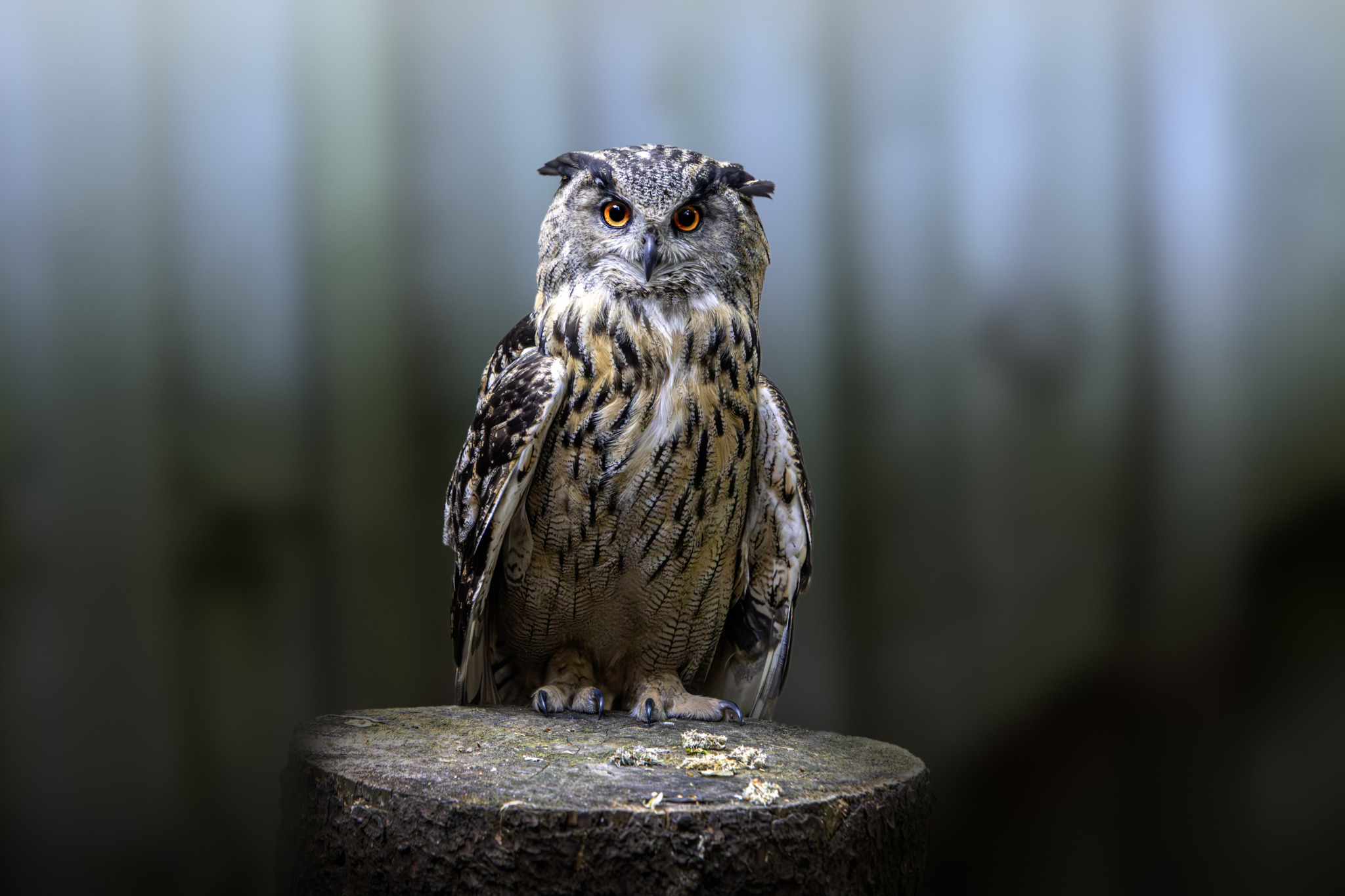The Eurasian Eagle-Owl (Bubo bubo) is one of the largest and most impressive owl species, known for its powerful presence and distinctive features. Here are some detailed characteristics and information about the Eurasian Eagle-Owl:
Appearance
- Size: The Eurasian Eagle-Owl is one of the largest owl species, with a body length ranging from 60 to 75 centimeters and a wingspan of 160 to 188 centimeters. Females are generally larger than males.
- Weight: They typically weigh between 1.5 and 4 kilograms, with females being heavier than males.
- Coloration: Their plumage is predominantly mottled with shades of brown, black, and buff, providing excellent camouflage against their natural habitat.
- Eyes: They have striking orange or yellow eyes, which are very prominent and contribute to their intense gaze.
- Ears: The Eurasian Eagle-Owl has distinctive ear tufts that stand upright, which are not ears but feather tufts that help in camouflage and communication.
Habitat
- Preferred Habitats: These owls inhabit a wide range of environments, including forests, mountains, taiga, and rocky terrains. They prefer areas with cliffs or large trees for nesting.
- Geographic Range: The Eurasian Eagle-Owl is widespread across Europe, Asia, and parts of North Africa. They are found from the Iberian Peninsula in the west to the Russian Far East in the east, and from Scandinavia in the north to the Mediterranean and parts of the Middle East in the south.
Behavior
- Nocturnal: Eurasian Eagle-Owls are primarily nocturnal, hunting mainly at night, though they can occasionally be seen during the day.
- Territorial: They are highly territorial and solitary outside of the breeding season. They defend large territories to ensure sufficient hunting grounds.
- Vocalizations: Their call is a deep, resonant “hoo-hoo,” which can carry for several kilometers. They are most vocal during the breeding season.
Diet
- Hunting and Feeding: They are apex predators, feeding on a wide range of prey, including mammals (such as rabbits, hares, and rodents), birds (including other birds of prey), reptiles, and amphibians. They hunt from a perch, using their keen vision and silent flight to ambush prey.
- Dietary Adaptability: They can adapt their diet based on the availability of prey in their habitat, making them versatile hunters.
Reproduction
- Breeding Season: The breeding season varies by region but generally occurs from late winter to early spring.
- Nesting: They do not build nests but instead lay their eggs in natural cavities, cliff ledges, or abandoned nests of other large birds. They may also nest on the ground in sheltered locations.
- Eggs and Incubation: Females lay 1 to 4 eggs, which are incubated for about 34-36 days. The female primarily incubates the eggs while the male provides food.
- Fledging: The chicks are covered in white down at hatching and begin to develop feathers as they grow. They fledge at about 5-6 weeks old but remain dependent on their parents for several months.
Conservation Status
- Population: The Eurasian Eagle-Owl is currently listed as Least Concern by the IUCN, with a stable or increasing population trend in many areas. However, they face threats from habitat destruction, human disturbance, and persecution in some regions.
- Protection: They are protected by various national and international laws and agreements, which help ensure their conservation.
Interesting Facts
- Longevity: In the wild, they can live up to 20 years, while in captivity, they have been known to live over 60 years.
- Cultural Significance: The Eurasian Eagle-Owl holds a significant place in various cultures and folklore, often associated with wisdom and mystery.
Identifying Bubo bubo
- Distinctive Features: The large size, ear tufts, striking orange or yellow eyes, and mottled plumage make the Eurasian Eagle-Owl easily recognizable.
- Behavioral Traits: Observing their powerful flight, territorial calls, and nocturnal hunting habits can aid in identification.
In summary, the Eurasian Eagle-Owl (Bubo bubo) is a formidable and majestic bird of prey, known for its large size, distinctive appearance, and versatile hunting skills. Found across a vast range of habitats in Europe, Asia, and North Africa, this owl species is an impressive and important part of its ecosystem. Conservation efforts continue to be crucial in ensuring the survival and stability of their populations in the wild.
Visited 1,001 times, 14 visit(s) today
Views: 1741
Subscribe to the newsletter:
